Key Takeaways from the 2016 Canadian Census Housing Data Release
By: Diana Petramala and Amanda Mackaay
November 23, 2017
The Centre for Urban Research and Land Development (CUR) thought that National Housing Week 2017 would be a great opportunity to reflect on some of the key takeaways from the Canadian census housing data release earlier this month. We have pulled five of the most interesting charts for Toronto (GTA). Note, in the text and charts that follow, we use the Census Metropolitan Area (CMA) definition when referring to Canadian metropolitan areas. This includes the five major municipalities in the Greater Toronto Area, but excludes the City of Oshawa.
Housing affordability actually holds steady over the last decade
The census data showed that Toronto has the highest share of households across the country who devote more than 30% of their income to shelter costs (Figure 1), even more so than in Vancouver where the average home price is over $300,000 more but incomes are roughly similar (Figure 2). But, this has not changed over time – the share of households devoting more than 30% of their income to shelter costs is the same as in 2006.
Toronto and Vancouver’s rental markets are quite different
It still might come as a surprise that Vancouver is deemed more affordable than Toronto. Households in Toronto have a higher rate of homeownership than those in Vancouver, but that is not where the main difference originates. The main difference in housing affordability between Toronto and Vancouver (or even the rest of Canada) lies in rental prices. Rents are higher in the GTA than they are in Vancouver, where a broader sweep of more affordable rental options, including secondary suits in single-detached homes, are offered.
The national average masks some challenges faced by millennials
Millennials are the only age group that have seen an increase in the amount of their income they must devote to shelter costs. 42% of this age group devotes over 30% of their income to shelter costs, compared 37% in Vancouver (Figure 2).
The combination of housing affordability and lack of new home completions for ground-related homes has shifted housing choices for millennials in Toronto. A higher share of those aged 20 to 34 were living at home longer than their parent’s probably would like them to in 2016. 47% of this age group surveyed in the census were still living at home, compared to the national average of 34%. For those who have left their parent’s house, the type of dwelling and tenure choice has also changed (Figure 3 and 4). Almost 50% of this age group is living in an apartment, compared to just 37% in 2006. Millennials are also renting more.
Boomers are downsizing – in due time
The data actually supports the view that boomers are downsizing at the same rate as their same age cohorts were a decade ago. However, the majority of boomers are not yet at the age where they would be expected to start downsizing. Downsizing starts at 65 years of age, but really picks up after 75. 70% of boomers are under the age of 75 years old. The likelihood of living in an apartment is rising with age (Figure 3). For instance, those 75 years and older are almost just as likely to be living in an apartment than those in their age group a decade ago (Figure 3). However, when seniors are downsizing (at older than 75 years), they are choosing to own over rent to a greater degree than in the past.
No relief for those really in need
So much chatter has focused on affordability issues for millennials and middle-income households that the discussion around core housing need rarely makes headlines anymore. But, the census data showed that Toronto has not made a dent in the share of households living in unsuitable housing conditions and devoting more than 30% of their income to monthly shelter costs. This segment of the market represents almost 20% of households in the CMA. Meanwhile, the core housing need has been on the rise in the rest of the Greater Golden Horseshoe as home prices skyrocket and low income households get pushed further out.
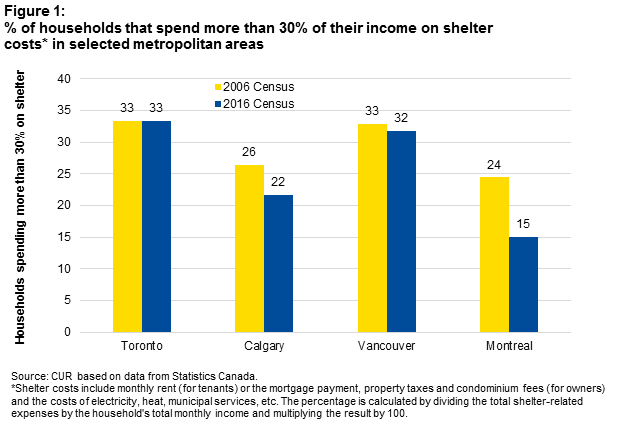
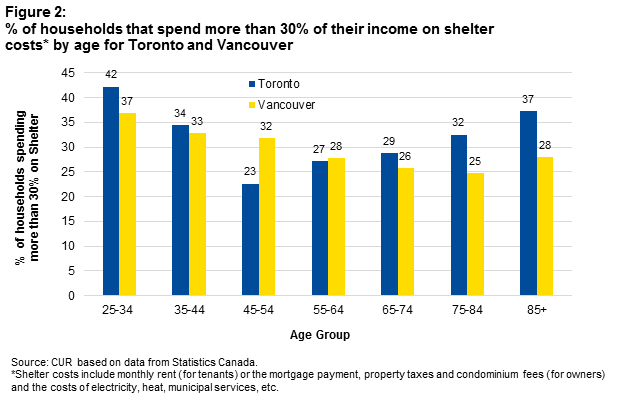
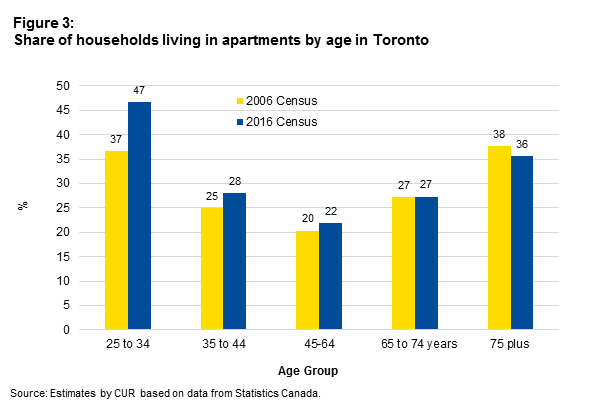
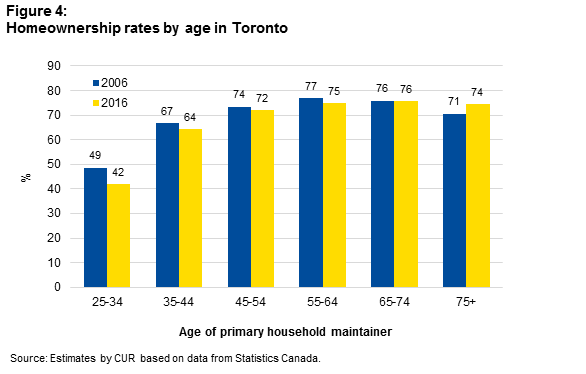
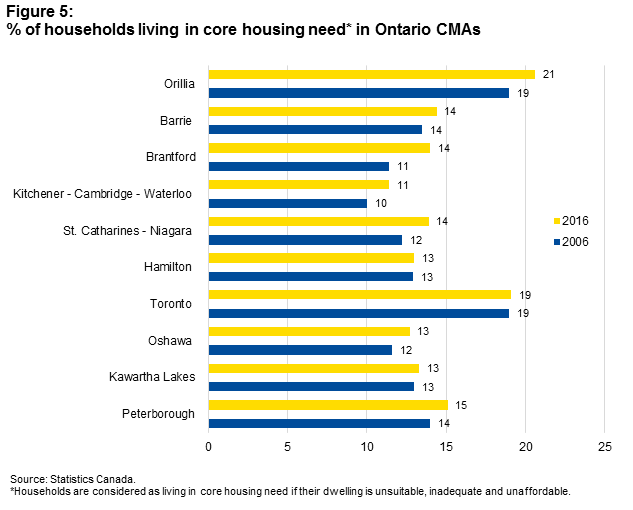
___________________________________________________________________________________________________________
Diana Petramala is Senior Researcher at the Centre for Urban Research and Land Development (CUR) at Toronto Metropolitan University
Amanda Mackaay is a Research Assistant at the Centre for Urban Research and Land Development (CUR) at Toronto Metropolitan University